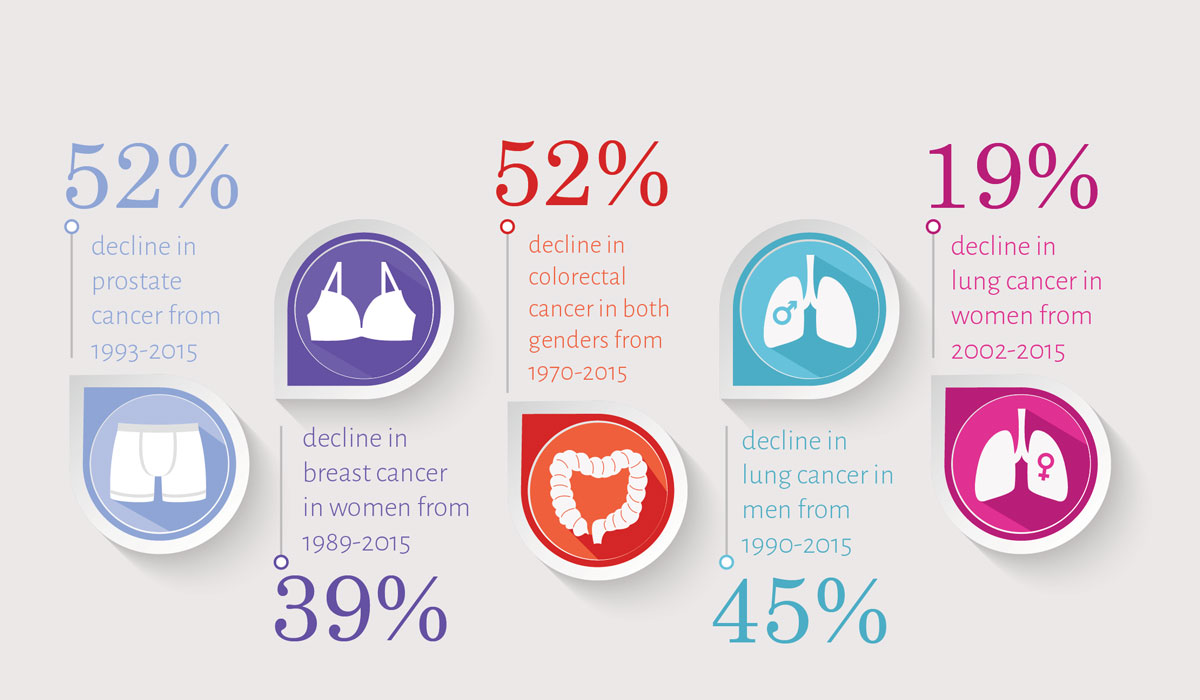In the 2018 release of its annual cancer statistics report, the American Cancer Society announced that U.S. cancer death rates fell for the 24th year in a row. The findings were published in CA: A Cancer Journal for Clinicians.
Cancer death rates peaked in 1991 but have declined steadily through 2015, which is the most recent year for which data are available. That translates into 2.4 million fewer deaths from cancer in 2015 than if mortality rates had remained at the 1991 levels.
In men, the most cancer-related deaths occur from lung, prostate, or colorectal cancers; in women, the most common causes of cancer-related mortality are lung, breast, or colorectal cancers. For both genders, these cancers account for 45% of all cancer-
related deaths.
In 2018, estimates suggest that 609,640 Americans will die from cancer, or approximately 1,700 deaths each day. Although survival continues to be lower for African Americans (61% five-year relative survival) than Caucasians (68% five-year relative survival), the gap is 33% lower in 2015 than it was in 1993, and the researchers attribute it to better access to health care. In fact, in New York and Massachusetts, mortality rates are lower for African Americans than for Caucasians; the researchers suggest that Massachusetts’s almost universal healthcare coverage may have helped eliminate racial disparities.
The study authors attribute the continued mortality rate decline to scientific advancements in early cancer detection and treatment as well as reductions in smoking. In fact, smoking cessation is the most important factor in the decreased rates, they reported, although tobacco continues to be the leading cause of cancer deaths today. It is responsible for almost 3 of every 10 cancer deaths.






